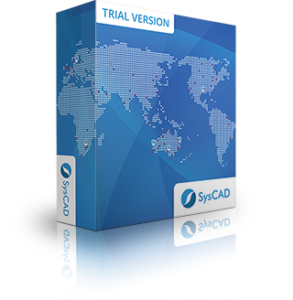Ex Mente, SysCAD Agent in South Africa, are currently hosting their annual ThermoWeek. Registration is still open for the online User’s Meeting this Thursday (15 April 2021), at which we are proud to be presenting two topics on thermochemical modelling within SysCAD. These demonstrate practical applications in SysCAD of using Gibbs Free Energy Minimisation for constrained conditions; and PHREEQC Surface Complexation Modeling for sorption on charged surfaces.
Dr Rod Stephenson – Constrained Free Energy Minimization, Python Scripting and Advanced Topics with SysCAD
SysCAD is a powerful process simulation tool aimed at providing mass/energy balance for large scale
plant models. The Gibbs Free Energy minimisation unit operation in SysCAD is generally used to
determine the equilibrium composition of an initial set of reactants at a specified temperature, or at
conditions determined by the enthalpy. In many physical situations, reactions may not proceed all the
way to equilibrium, and SysCAD allows the user to easily control the extent of individual reactions by
locking up some fraction of key rate limiting species. To model the time evolution of an initial state,
the SysCAD user can incorporate reaction rates for rate limiting species into the SysCAD model
and run a dynamic simulation, where other fast reactions proceed directly to equilibrium. In our
presentation we will introduce SysCAD and its capability relevant to Thermochemistry modelling,
and demonstrate CFEM by driving a simulation via python scripting that allows the modeler access
to powerful external computational and visualisation tools to complement SysCAD features.
Dr Kevin Heppner – Thermodynamic Modelling of Mining Wastewater Treatment
Remaining competitive in today’s challenging regulatory environment requires a fundamental under-
standing of the chemical processes impacting a mine wastewater treatment process. SysCAD process
simulation software offers state of the art modelling tools to calculate water treatment efficiency and
solids generation rates from first principles thermodynamics. This capability comes from embedded
links to a number of software packages, such as OLI, PHREEQC, AQSol, HSC, and ChemApp (FACT-
Sage), which offer these capabilities. This work presents a first principles approach to modelling the
removal of arsenic, molybdenum, nickel, and aluminum in the treatment of solvent extraction raffinate
using lime and ferric sulphate. Competitive adsorption to both ferrihydrite and alumina surfaces
are considered, along with precipitation of a large number of secondary minerals.

